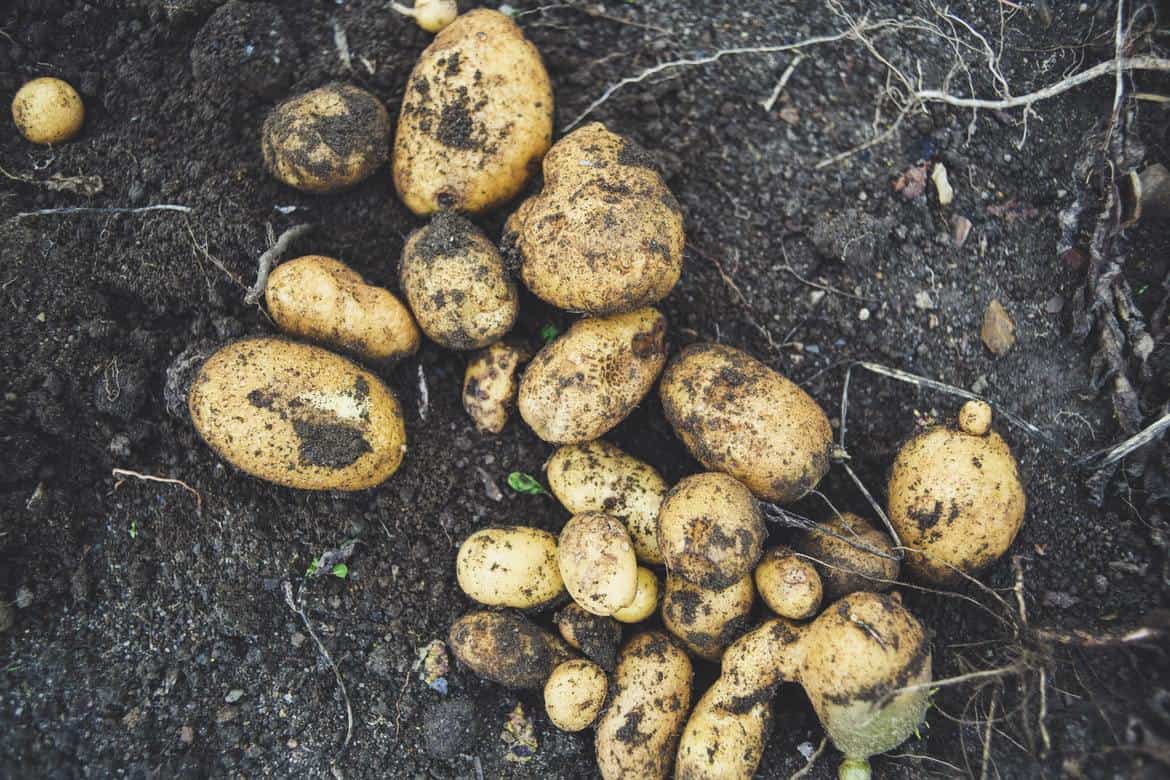Jump to:
Some vegetables don’t survive the cold season, but many thrive in winter greenhouses. This list is a great starting point if you’re looking for easy-to-grow veg options that you can take outside when the weather warms up, and they’ll grow in an unheated greenhouse. Get your notebook, curate your own list, and let’s get started!
Herbs that grow in a greenhouse during winter

There are plenty of herbs that can survive the UK’s harsh winter weather when sheltered in a greenhouse. So there’s no reason to miss out just because the season has shifted. If you’ve grown some in pots, bring them in so they can tend better throughout the colder months. Here are your herb selections:
- Chervil
- Chicory
- Chives
- Coriander
- Fennel
- Garlic bulbs
- Lavender
- Lemon Balm
- Marjoram
- Mint
- Oregano
- Greek Oregano
- Parsley
- Rocket
- Rosemary
- Sage
- Sorrel
- Thyme
- Winter tarragon
- Yarrow
Growing tip: Plant several pots of the same herb, and you can pick from one pot while the others continue to grow. This means you’ll always have herbs ready for harvest, ensuring a steady supply. Check out these herb garden ideas for more inspiration.
Grow potatoes earlier in a greenhouse

Ready to dig into some delicious spuds? Potatoes are your go-to crop for winter into early spring. You’ve got options for planting: in rows, mounds, containers, bags, or towers, so take your pick!
If you’re planting in early winter, you can expect them to be ready for harvest by March. Give your potatoes a blanket of mulch for insulation to regulate soil temperature. And when frost threatens, throw on a tarp, blanket, or floating row cover to keep them snug.
Greenhouse lettuce

Winter lettuce is perfect if you’re looking to add more salad to your Christmas spread. Little Gem, arugula, and Lamb’s Lettuce are the best bets for their rapid growth. If planted early enough in winter and given proper care, they can be served on the table for the holidays.
Remember, such lettuces crave sunlight, so give them prime spots in your greenhouse. Cosy them up with row covers when frost threatens on chilly nights. Don’t forget to rotate your crops to keep the soil healthy and pest-free!
Kale and spinach

Bring more green goodness into your winter greenhouse with kale and spinach. These veggies grow well together because they share the same cultural requirements. And you won’t have to wait long for your first harvest, usually just 50 to 70 days!
Plant kale and spinach seeds half an inch deep and three inches apart. Give them space, at least 18 inches between kale rows and 12 inches for spinach. Then, keep that soil misted until those little seeds sprout, usually within a week. Once they develop their second set of leaves, thin them out so they’re each about 12 inches apart in every row.
Cabbage and broccoli

Cabbage and broccoli love consistent temperatures between 7-13°C at night and 10-21°C during the day. With these conditions, they can flourish throughout the winter season. Get a head start by planting them around mid-winter, and you’ll be rewarded with a bounty come springtime.
Keep an eye on those temperature swings and give them the TLC they deserve for optimal growth. Also, remember to water them regularly and fertilise a little to keep them happy and healthy.
Carrots

Next, let’s talk about carrots and why they’re a must-have in your winter greenhouse lineup. With cooler weather, the soil stays moist, perfect for those tiny seeds to sprout and flourish. These cold-hardy plants are space-savers, too! They can happily grow in containers, so no need to worry about crowding.
Plant them in late autumn, and you’ll be crunching on fresh carrots as soon as the thaw hits. Choose a sunny spot with light, fertile soil and good drainage. One more thing — keep those weeds at bay and give them a little love with regular watering. Your future self will thank you for those sweet, crunchy rewards!
Broad beans

If there’s another plant that’s easier to start from seed in cool soil, that’s broad beans. Broadies are tolerant of the frosty weather, and they’re a real treat for both winter and spring gardens. Sown in the next week or two, and you can enjoy them in just around 60 days.
You just pop the seeds about 2cm deep into the soil, spacing them 20 to 30cm apart. Easy peasy, right? Skip the nitrogen-based fertilisers. They’ve got their own special way of grabbing nitrogen from the air using these cool nodules on their roots.
With these veggies and herbs, you can enjoy fresh, homegrown produce even when it’s chilly outside. We hope this list will give you an idea of what to grow in your winter greenhouse next, and may it be filled with delicious harvests!
If you have any further questions, please don’t hesitate to contact us at 01909 768840. Next on your reading list: How to Start a Garden Greenhouse





